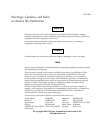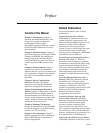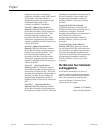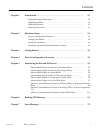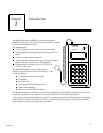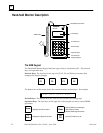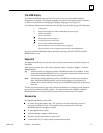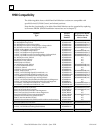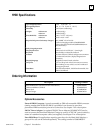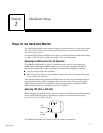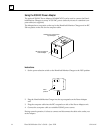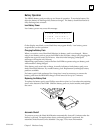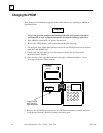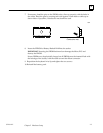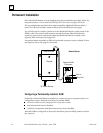
1
F1 F2 F3 F4
789Home
456
Menu
123Clear
+
0
On
Off
–
GENIUS
GE Fanuc
Hand Held Monitor
mon
cfg
Restarts for autonumbers that do not restart in each
chapter.
figure bi level 1, reset
table_big level 1, reset
chap_big level 1, reset1
app_big level 1, resetA
figure_ap level 1, reset
table_ap level 1, reset
figure level 1, reset
table level 1, reset
these restarts must be in the header frame of chapter 1.
a:ebx, l 1 resetA
a:obx:l 1, resetA
a:bigbx level 1 resetA
a:ftr level 1 resetA
c:ebx, l 1 reset1
c:obx:l 1, reset1
c:bigbx level 1 reset1
c:ftr level 1 reset1
Reminders for autonumbers that need to be restarted
manually (first instance will always be 4)
let_in level 1: A. B. C.
letter level 1:A.B.C.
num level 1: 1. 2. 3.
num_in level 1: 1. 2. 3.
rom_in level 1: I. II. III.
roman level 1: I. II. III.
steps level 1: 1. 2. 3.
1-1
GFK-0121E
Chapter 1 Introduction
The Hand-held Monitor (HHM) is a convenient operator
interface device that can be used to set up and monitor a Genius
I/O and communications system.
The HHM features:
An LCD display with four lines of 16 characters each.
Selectable display language: English, German, French, or
Italian.
A 20-key sealed-membrane keypad.
A keyswitch that can be used to restrict operator access to
certain functions, as selected for the application.
Operation from its battery pack, or by 115 volt AC
or 230 volt AC power.
The Hand-held Monitor screen is the operator’s
window to the Genius bus and all of its devices. It can
be used to display:
I/O data for any device on the bus.
Diagnostics.
Bus scan time.
Descriptions of all devices on the bus.
Global Data addresses.
Memory data from CPUs on the bus.
The Hand-held Monitor can also be used for device configuration, fault clearing, and forcing I/O circuits
and dual bus selection. It can also be set up to prevent the use of any of these capabilities.
A key feature of the Hand-held Monitor is its ability to communicate with I/O blocks and to force discrete
and analog I/O, whether or not there is a PLC or computer connected to the bus. This greatly simplifies
system check-out prior to full-scale system operation.




